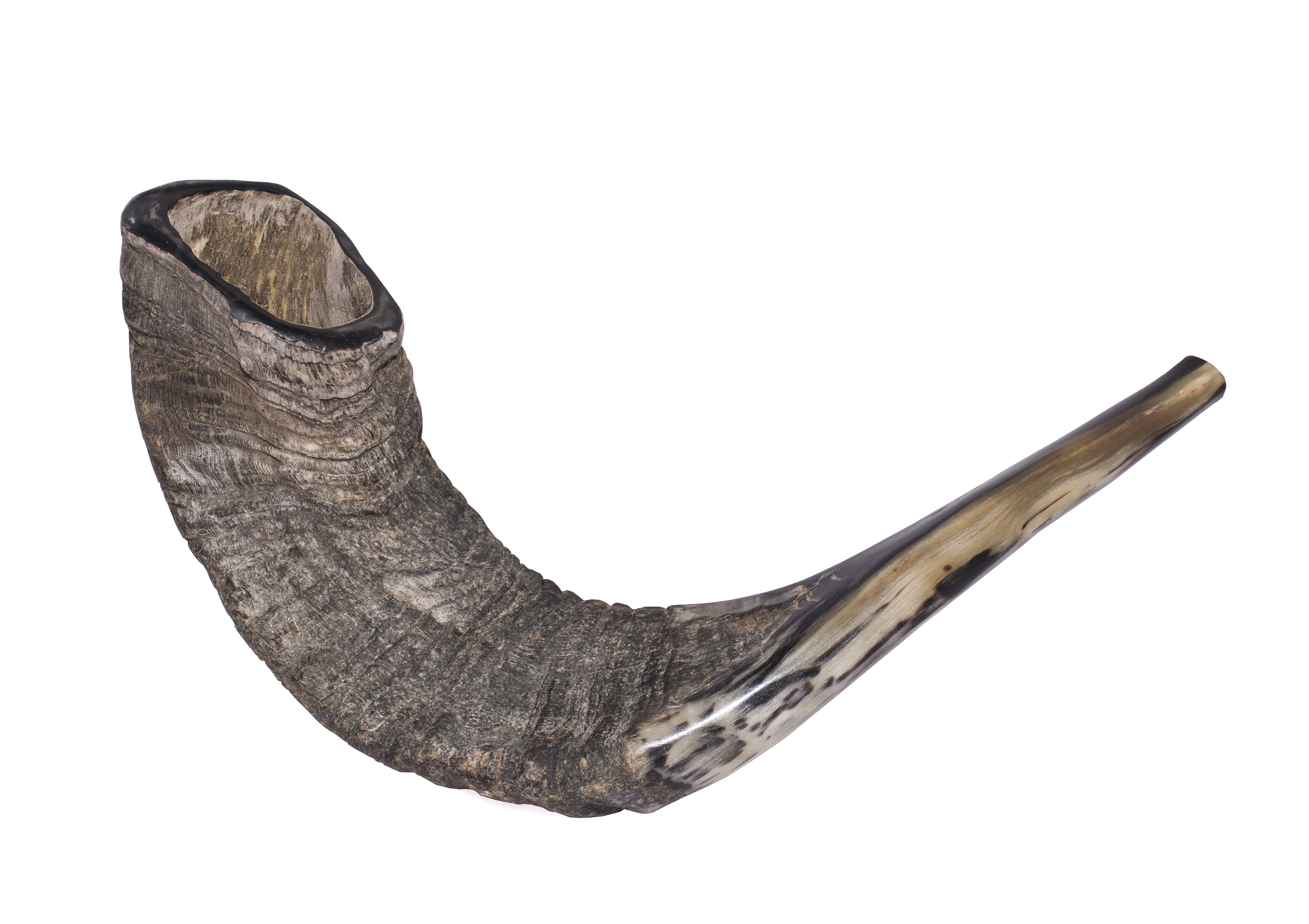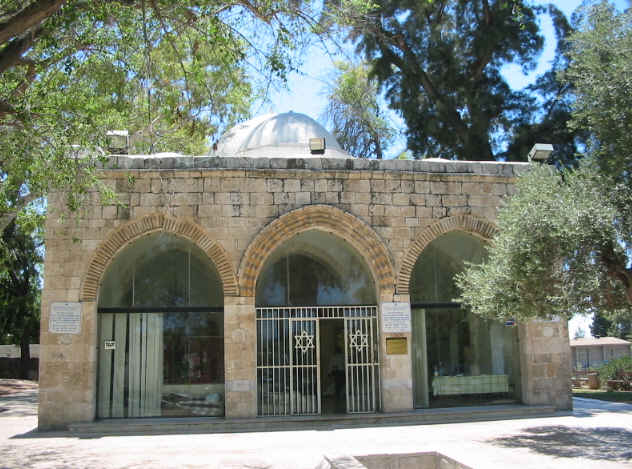|
Rosh HaShannah (Talmud)
Rosh Hashanah () is the name of a text of Jewish law originating in the Mishnah which formed the basis of tractates in both the Talmud, Babylonian Talmud and the Jerusalem Talmud of the same name. It is the eighth tractate of the order ''Moed''. The text contains the most important rules concerning the calendar year, together with a description of the inauguration of the months, laws on the form and use of the shofar and laws related to the religious services during the Jewish holidays, Jewish holiday of Rosh Hashanah. Mishna The Mishnah commences with an account of the four beginnings of the religious and the civil year (s:Mishnah/Seder Moed/Tractate Rosh Hashanah/Chapter 1/1, 1:1); it speaks of the four judgement-days of the pilgrim festivals and Rosh ha-Shanah (s:Mishnah/Seder Moed/Tractate Rosh Hashanah/Chapter 1/2, 1:2); of the six months in which the messengers of the Sanhedrin announce the month (s:Mishnah/Seder Moed/Tractate Rosh Hashanah/Chapter 1/3, 1:3); of the two mon ... [...More Info...] [...Related Items...] OR: [Wikipedia] [Google] [Baidu] |
Shofar
A shofar ( ; from , ) is an ancient musical horn, typically a ram's horn, used for Jewish ritual purposes. Like the modern bugle, the shofar lacks pitch-altering devices, with all pitch control done by varying the player's embouchure. The shofar is blown in synagogue services on Rosh Hashanah and at the end of Yom Kippur; it is also blown every weekday morning in the month of Elul running up to Rosh Hashanah. Shofars come in a variety of sizes and shapes, depending on the choice of animal and level of finish. Bible and rabbinic literature The shofar is mentioned frequently in the Hebrew Bible, the Talmud and rabbinic literature. In the first instance, in , the blast of a shofar emanating from the thick cloud on Mount Sinai makes the Israelites tremble in awe. The shofar was used to announce the new moon and the Jubilee year. The first day of Tishrei (now known as Rosh Hashana) is termed a "memorial of blowing", or "day of blowing", the shofar. Shofars were used for si ... [...More Info...] [...Related Items...] OR: [Wikipedia] [Google] [Baidu] |
Shabbat
Shabbat (, , or ; , , ) or the Sabbath (), also called Shabbos (, ) by Ashkenazi Hebrew, Ashkenazim, is Judaism's day of rest on the seventh day of the seven-day week, week—i.e., Friday prayer, Friday–Saturday. On this day, religious Jews remember the biblical stories describing the Genesis creation narrative, creation of the heaven and earth in six days and the redemption from slavery and the Exodus from Egypt. Since the Hebrew calendar, Jewish religious calendar counts days from sunset to sunset, Shabbat begins in the evening of what on the civil calendar is Friday. Shabbat observance entails refraining from 39 Melachot, work activities, often with shomer Shabbat, great rigor, and engaging in restful activities to honor the day. Judaism's traditional position is that the unbroken seventh-day Shabbat originated among the Jewish people, as their first and most sacred institution. Variations upon Shabbat are widespread in Judaism and, with adaptations, throughout the Abraham ... [...More Info...] [...Related Items...] OR: [Wikipedia] [Google] [Baidu] |
Yom Kippur
Yom Kippur ( ; , ) is the holiest day of the year in Judaism. It occurs annually on the 10th of Tishrei, corresponding to a date in late September or early October. For traditional Jewish people, it is primarily centered on atonement and repentance. The day's main observances consist of full fasting and asceticism, both accompanied by extended prayer services (usually at synagogue) and sin confessions. Some minor Jewish denominations, such as Reconstructionist Judaism, focus less on sins and more on one's goals and accomplishments and setting yearly intentions. Alongside the related holiday of Rosh Hashanah, Yom Kippur is one of the two components of the High Holy Days of Judaism. It is also the last of the Ten Days of Repentance. Name The formal Hebrew name of the holiday is , 'day fthe atonements'. This name is used in the Bible, Mishnah, and Shulchan Aruch. The word 'atonement' is one of many Biblical Hebrew words which, while using a grammatical plural form, ... [...More Info...] [...Related Items...] OR: [Wikipedia] [Google] [Baidu] |
Yavne
Yavne () is a city in the Central District (Israel), Central District of Israel. In 2022, it had a population of 56,232. Modern Yavne was established in 1949. It is located near the ruins of the ancient town of Yibna (known also as Jamnia and Jabneh), later the village of Yibna, and today the archeological site of Tel Yavne. Ancient Yavne holds a special place in Jewish history because of the ancient town's contribution to Judaism's recovery and reconstitution under Tannaim, sages Yohanan ben Zakkai, ben Zakkai and Gamaliel II following the Siege of Jerusalem (70 AD), destruction of the Second Temple. This period, sometimes known as the "Yavne period", became a crucial mark in the development of Rabbinic Judaism. The city has a history of Winemaking, producing wine throughout much of antiquity, as indicated by both archeological findings and ancient sources. Name In many English translations of the Bible, Yavne was known as Jabneh . In Greek and Latin-speaking sources, it was kn ... [...More Info...] [...Related Items...] OR: [Wikipedia] [Google] [Baidu] |
Nasi (Hebrew Title)
Nasi () is a title meaning "prince" in Biblical Hebrew, "Prince Sanhedrin.html" ;"title="f the Sanhedrin">f the Sanhedrin in Mishnaic Hebrew. Certain great figures from Jewish history have the title, including Judah ha-Nasi,Harry Gersh, ''The Sacred Books of the Jews'', 1968, Stein and Day, New York, p. 104 who was the chief redactor of the Mishnah as well as nasi of the Sanhedrin. In Modern Hebrew, its meaning has changed to " president". Usage Genesis and ancient Israel The noun nasi (including its grammatical variations) occurs 132 times in the Masoretic Text of the Hebrew Bible and is usually translated "prince", or occasionally "captain." The first use is for the twelve "princes" who will descend from Ishmael, in the Book of Genesis ( Lech-Lecha, ), and the second use (in Chayei Sarah ), is the Hittites recognising Abraham as "a godly prince" ( '). In the Book of Leviticus ( Vayikra, ), in the rites of sacrifices for leaders who err, there is the special offering made ... [...More Info...] [...Related Items...] OR: [Wikipedia] [Google] [Baidu] |
Tishri
Tishrei () or Tishri (; ''tīšrē'' or ''tīšrī''; from Akkadian language, Akkadian ''tašrītu'' "beginning", from ''šurrû'' "to begin") is the first month of the civil year (which starts on 1 Tishrei) and the seventh month of the ecclesiastical year (which starts on 1 Nisan) in the Hebrew calendar. The name of the month is Babylonian. It is a month of 30 days. Tishrei usually occurs in September–October on the Gregorian calendar. In the Hebrew Bible the month is called Ethanim ( – ), or simply the seventh month. In the Babylonian calendar the month is known as Araḫ Tišritum, "Month of Beginning" (of the second half-year). Edwin R. Thiele has concluded, in ''The Mysterious Numbers of the Hebrew Kings'', that the ancient Kingdom of Judah counted years using the civil year starting in Tishrei, while the Kingdom of Israel (Samaria), Kingdom of Israel counted years using the ecclesiastical new year starting in Nisan. Tishrei is the month used for the counting of the E ... [...More Info...] [...Related Items...] OR: [Wikipedia] [Google] [Baidu] |
Joshua Ben Hananiah
Joshua ben Hananiah ( ''Yəhōšūaʿ ben Ḥănanyā''; d. 131 CE), also known as Rabbi Yehoshua, was a leading tanna of the first half-century following the destruction of the Second Temple. He is the eighth-most-frequently mentioned sage in the Mishnah. Biography He was of Levitical descent, and served in the sanctuary as a member of the class of singers. His mother intended him for a life of study, and, as an older contemporary, Dosa ben Harkinas, relates, she carried the child in his cradle into the synagogue, so that his ears might become accustomed to the sounds of the words of the Torah. It was probably with reference to his pious mother that Yohanan ben Zakkai thus expressed himself concerning Joshua ben Hananiah: "Hail to thee who gave him birth".Pirkei Avot 2:8 According to another tradition Yohanan ben Zakkai praised him in the words of Ecclesiastes (4:12), "And a threefold cord is not quickly broken." Perhaps he meant that in Joshua the three branches of tradition ... [...More Info...] [...Related Items...] OR: [Wikipedia] [Google] [Baidu] |
Gamliel II
Rabban Gamaliel II (also spelled Gamliel; ; before –) was a rabbi from the second generation of tannaim. He was the first person to lead the Sanhedrin as ''nasi'' after the fall of the Second Temple in 70 CE. He was the son of Shimon ben Gamaliel, one of Jerusalem's foremost men in the war against the Romans, and grandson of Gamaliel I. To distinguish him from the latter he is also called Gamliel of Yavne. Biography He seemed to have settled initially in Kefar 'Othnai in Lower Galilee, but with the outbreak of the war with Rome, he fled to Jerusalem. From there, he moved to Yavne. In Yavne, during the siege of Jerusalem, the scribes of the school of Hillel had taken refuge by permission of Vespasian, and a new centre of Judaism arose under the leadership of the aged Johanan ben Zakkai, a school whose members inherited the authority of the Sanhedrin of Jerusalem. He was appointed ''nasi'' in approximately the year 80 CE. Leadership Gamaliel II became Johanan ben Zakkai ... [...More Info...] [...Related Items...] OR: [Wikipedia] [Google] [Baidu] |
Av Bet Din
The ''av beit din'' (), abbreviated ( ''avad''), was the second-highest-ranking member of the Sanhedrin during the Second Temple period and served as an assistant to the nasi. The av beit din was known as the "Master of the Court;" he was considered the most learned and important of these seventy members. Menahem the Essene served as av beit din in the 1st century BCE before abdicating to "serve the King" in 20 BCE. The House of Shammai attained complete ascendency over the Sanhedrin from 9 CE until Gamaliel became nasi in 30 CE. The post of av beit din was eventually filled since the Babylonian Talmud states that Joshua ben Hananiah was the av beit din in Baba Kamma 74b and Nathan the Babylonian was av beit din in Horayot 13b in the Babylonian Talmud. The Jerusalem Talmud tells the story of how Gamaliel II was deposed and Eleazar ben Azariah replaced him as Nasi. After Gamaliel was reinstated, Eleazar ben Azariah was made av beit din. The parallel story in the Babylonian Talmud h ... [...More Info...] [...Related Items...] OR: [Wikipedia] [Google] [Baidu] |
Bet Ya'azeḳ
Black Entertainment Television (BET) is an American basic cable channel targeting Black American audiences. It is the flagship channel of the BET Media Group, a subsidiary of Paramount Global's CBS Entertainment Group. Originally launched as a USA Network programming block on January 25, 1980, BET would eventually become a full-fledged channel on July 1, 1983. , BET is available to approximately 67,000,000 pay television households in the United States-down from its 2011 peak of 92,000,000 households. History Early years After stepping down as a lobbyist for the cable industry, Freeport, Illinois native Robert L. Johnson decided to launch his own cable television network. Johnson acquired a loan for $15,000 (equivalent to $55,648 in 2023) and a $500,000 (equivalent to $1,854,921 in 2023) investment from media executive John Malone to start the network. The network, which was named Black Entertainment Television (BET), launched on January 25, 1980. Cheryl D. Miller design ... [...More Info...] [...Related Items...] OR: [Wikipedia] [Google] [Baidu] |
Babylon
Babylon ( ) was an ancient city located on the lower Euphrates river in southern Mesopotamia, within modern-day Hillah, Iraq, about south of modern-day Baghdad. Babylon functioned as the main cultural and political centre of the Akkadian-speaking region of Babylonia. Its rulers established two important empires in antiquity, the 19th–16th century BC Old Babylonian Empire, and the 7th–6th century BC Neo-Babylonian Empire. Babylon was also used as a regional capital of other empires, such as the Achaemenid Empire. Babylon was one of the most important urban centres of the ancient Near East, until its decline during the Hellenistic period. Nearby ancient sites are Kish, Borsippa, Dilbat, and Kutha. The earliest known mention of Babylon as a small town appears on a clay tablet from the reign of Shar-Kali-Sharri (2217–2193 BC), of the Akkadian Empire. Babylon was merely a religious and cultural centre at this point and neither an independent state nor a large city, s ... [...More Info...] [...Related Items...] OR: [Wikipedia] [Google] [Baidu] |
Bonfire
A bonfire is a large and controlled outdoor fire, used for waste disposal or as part of a religious feast, such as Saint John's Eve. Etymology The earliest attestations date to the late 15th century, with the Catholicon Anglicum spelling it as ''banefyre'' and John Mirk's ''Book of Festivals'' speaking of a communal fire in celebrations of Saint John's Eve that "was clene bones & no wode & that is callid a bone fyre". The word is thus a compound of "bone" and "fire." Samuel Johnson's 1755 ''Dictionary of the English Language, Dictionary'' incorrectly analyzed "bon" as the French ''bon'' 'good'. Regional traditions In many regions of continental Europe, bonfires are made traditionally on 24 June, the solemnity of John the Baptist, as well as on Saturday night before Easter. Bonfires are also a feature of Walpurgis Night in central and northern Europe, and Bonfires of Saint John, the celebrations on the eve of St. John's Day in Spain. In Sweden bonfires are lit on Walpurgis ... [...More Info...] [...Related Items...] OR: [Wikipedia] [Google] [Baidu] |






